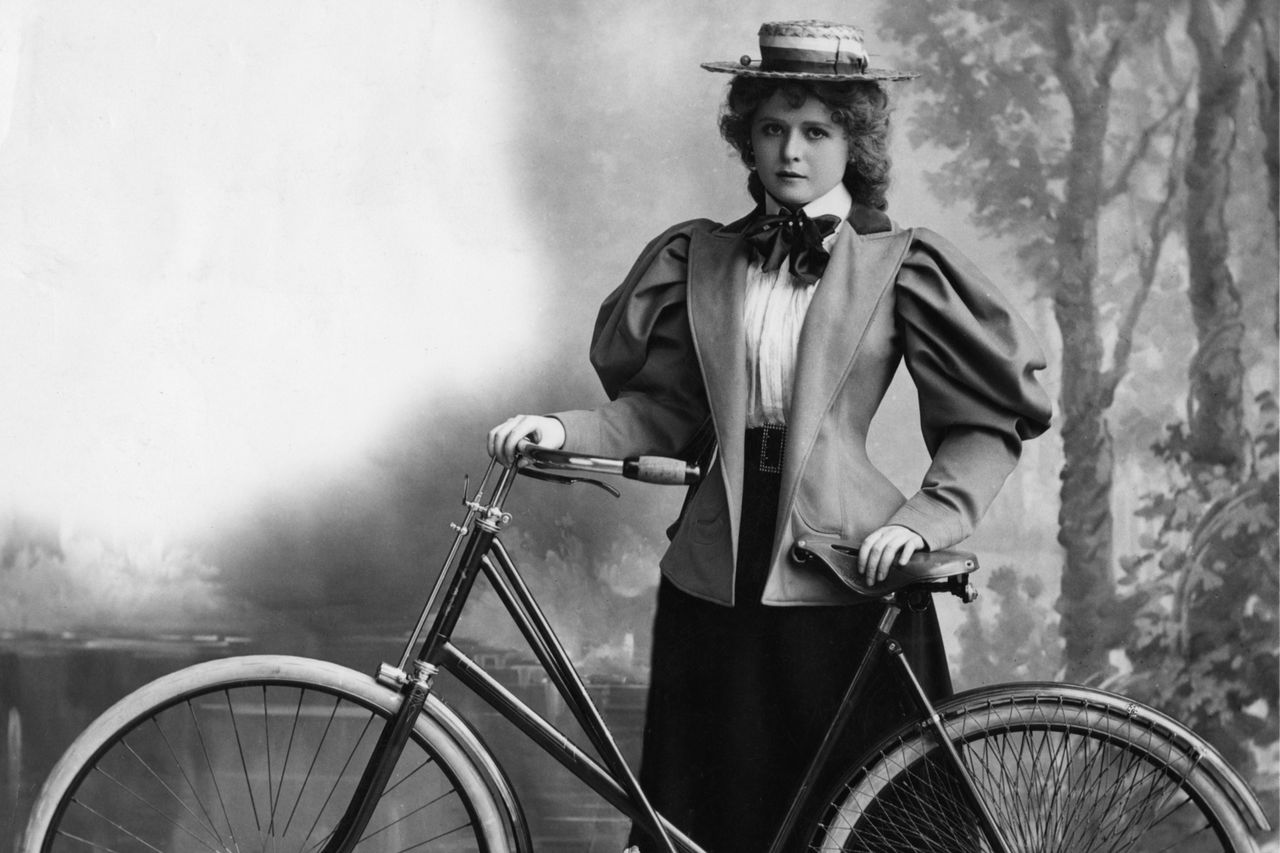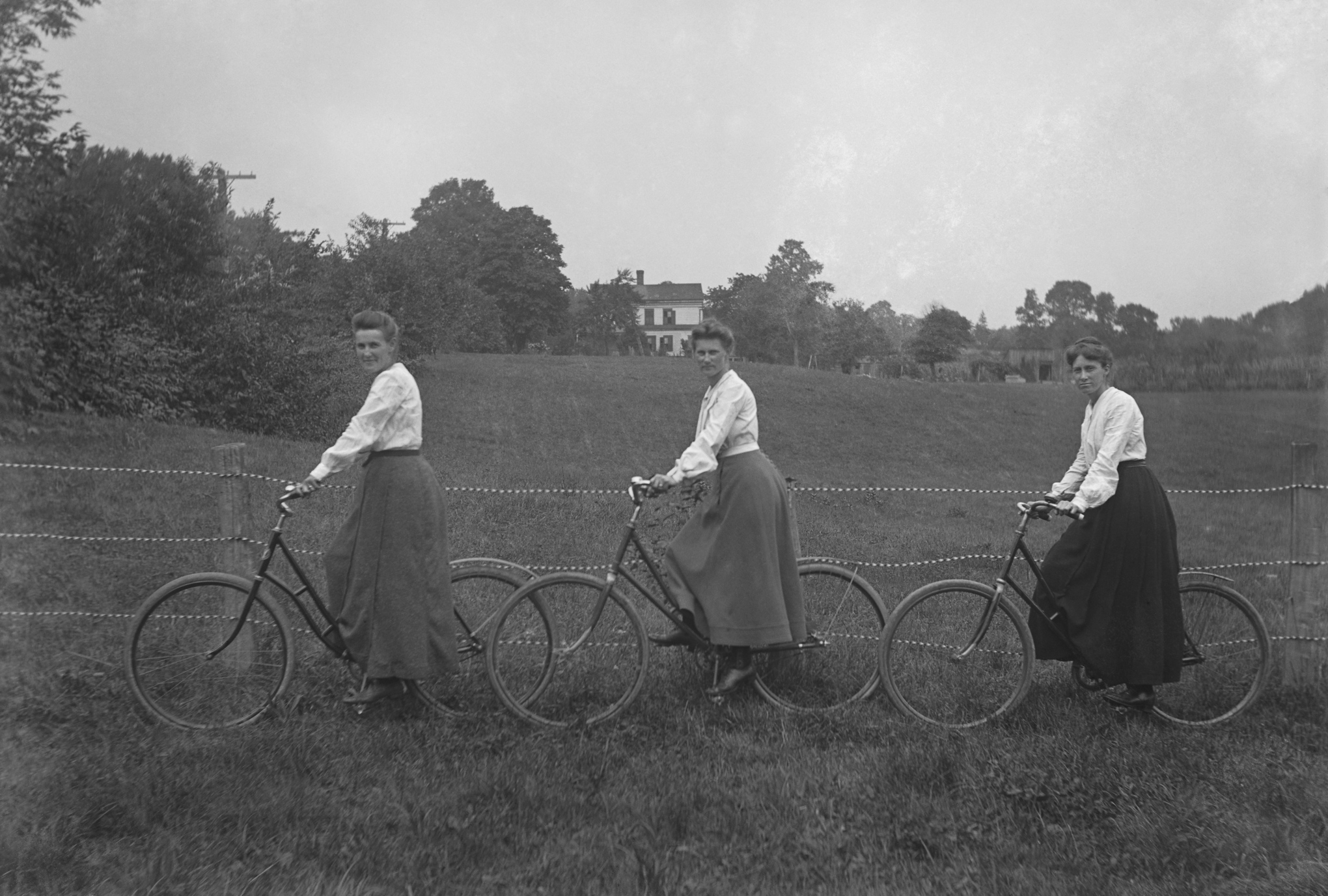Showing posts with label
illnesses supposedly caused by cycling.
Show all posts
Showing posts with label
illnesses supposedly caused by cycling.
Show all posts
I don't deny that a lot of riding--especially without proper conditioning or an ill-fitting bike--can cause pain, numbness and other problems.
I also don't deny that long hours in the saddle--especially if that saddle is wrong for the rider--can cause discomfort and even dysfunction in the genital area.
But it seems that every few years someone manages to whip up hysteria about how cycling causes sterility or worse. Back in the day, some of us used to joke that those folks were right and we indeed had "bike balls."
Yes, cycling can make you radioactive down there! ;-)
One of my graduate school professors said, "If you can't say it in English, say it in French. If French doesn't work, go to German. If you still can't say what you're trying to say, try Latin. If that fails, there's always ancient Greek."
Well, I could follow his advice only partway: Although my French was, and is, good, I had reading, but not conversational or writing, ability in Latin. And I only knew all the German I learned in one semester and while biking through the country, just as I know a few words of Greek acquired just before, and during, my most recent trip. (I wonder, though, how much Socrates' Greek was like the language I butchered in the marketplaces of Milos and cafes of Thissio.
I got to thinking about my old professor's advice when I heard about another professor--Louis Vivanco, a cultural anthropologist at the University of Vermont. His specialty is the anthropology of environmental movements, and he had a particular interest in cycling. So, not surprisingly, he spent a lot of time looking at old newspaper articles about the "maladies" that afflicted early cyclists in Vermont, and other places. There were warnings about "bicycle face," a mask into which a cyclist's face contorted itself, as well as explanations about "cyclist's neuralgia," a condition that manifested itself with, among other symptoms, shriveling penises in men and "spinsterhood" (oh, my!) in women.

He wanted to present his findings to a wider audience. That brought him to a crisis: He realized that an academic paper could not do them justice. For a researcher like him, that's akin to a writer learning that words don't do justice to anything (You mean they don't!) or a mathematician realizing that numbers can't express the relationships he or she is trying to elucidate.
His "crisis", if you will, came to a head while he attended a symposium on comics in academia. At the end of a lecture, he went up to the presenting professor and asked "How can I do this myself?"
That professor's advice: "Go get yourself an illustrator."
Such advice is sound, except for one problem which I, as an educator, can relate to: Vivanco couldn't afford to hire such a professional. So, he decided to "give it a shot" and draw the illustrations himself. "I try to be kind an idiot savant: I look at art and books and comics and then I do my best to reproduce what I see."

That work has led to comics about cycling throughout history, and in the present. They illustrate, if you will, much about the way larger society related to cycling and cyclists. Today we lobby for better cycling infrastructure, or to get any such infrastructure at all. So did cyclists 120 to 130 years ago, in Vermont and other places. The difference, as Vivanco points out, is that because bicycles were far more expensive in relation to people's incomes than they are now, cyclists tended to be well-off and well-connected, and therefore had connections to leaders or power-brokers, if they weren't those leaders or power-brokers themselves. Thus, cycling clubs in places like Brattleboro and even larger cities were part of the political establishment and were quite effective in getting safer roads and other amenities. Today, in contrast, cyclists are, in most places, organizing and lobbying as outsiders looking in at the lawmakers and institutions they're trying to influence.

From what Professor Vivanco says, media like comics are a way to help open the doors by making information more available to non-specialists. He points out something I know very well: Academic discourse has a language and culture all of its own and, because they are learned by relatively few people, reach very few people. The same could be said for any number of professions related to urban planning and policy-making, such as law, engineering and environmental psychology. Comics and other graphic media can also help people who are not specialists--and busy professionals who don't have the time or inclination to read lengthy tomes or ponderous articles on topics outside of their fields--to better understand how the struggle to get better conditions for cyclists is related to other efforts to make cities and other environments more livable and sustainable.
Most important, perhaps, comics like Professor Vivanco's can show how demands for better air quality and bike lanes are not new, and are not battles that can be won today and forgotten tomorrow.
I'll close by saying that I like Vivanco's drawings: They remind me of the work of Rick Morrall, who did the illustrations for Tom Cuthbertson's bike-related writings. At least, I think that's what Morrall's work would look like if Bike Tripping had been published in 1892 instead of 1972.
Every decade or so, someone resurrects the rumor that cycling causes sterility--or other kinds of sexual dysfunction--in men. And it usually dies down after some prominent cyclist or journalist points out that nearly all top-level racers--and most in the lower echelons--have more than one child.
Hey, when I was riding with the Central Jersey Bike Club, one of our ride captains fathered a child at age 62!
Still, the rumor that cycling causes sterility might make the rounds again soon--especially since we have the Internet now. But even with that technological marvel, another cycling-related rumor probably won't start.
It's not just becaue the rumor has been dead for a century or so. The reason, I think, the rumor I'll metion won't circulate is that it incubated in a social environment very different from what we have today.
That social environment was the first bike boom in America, during the 1890s and the first decade of the 20th Century. In it, women started to unlace their corsets and toss them away--to a large degree because the women began riding bicycles. They were still a decade from having the right to vote, and feminists of that time were working to make it happen. Few things made some religious fundamentalists and social conservatives more leery than women going to the voting booth and choosing the candidates they thought best.
Those fearful men included some doctors and others in the health professions. They were not above making up a condition to scare women out of riding--or to get the men in their lives to discourage or forbid them from getting on their bikes.
What was that malady those doctors concocted? "Bicycle face". Yes, you read that right. "Over-exertion, the upright position on the wheel and the unconscious attempt to maintain one's balance tend to produce a weary and exhausted face," noted the Literary Digest in 1895.

The article went on to describe the condition: "usually flushed, but sometimes pale, often with lips more or less drawn, and the beginings of shadows under the eyes, and always with an expression of weariness".
Hmm...That describes a lot graduate students I've seen.








